
16 minute read
Europeans in the Lead
The race to be tallest, biggest and greenest
Mjøstårnet PHOTOS: Ricardo Foto, Woodify, Øystein Elgsaas
Advertisement
As wood’s resilience, versatility, cost-effectiveness and environmental benefits are becoming better understood, high-rise wood construction – whether hybrid or completely mass timber – is growing increasingly popular throughout the world. While innovative building design is fueling wood’s resurgence, Europe rightfully claims a leadership role in promoting the use of mass timber. This February, French President Emmanuel Macron announced that by 2022, the country would aim for building all new public buildings with at least 50 percent wood and/or other bio-sourced materials; the decision was inspired by the low-carbon mandate introduced by Paris, which requires all structures eight storeys or taller to be constructed of timber for the 2024 Summer Olympics.
A 2017 report by the Council on Tall Buildings and Urban Habitat revealed that the majority of timber-based projects seven storeys and taller were being constructed in France, Austria and

Norway. While some of those projects, such as Michael Green Architecture’s 35-storey Baobab tower in France, are presently unconfirmed or postponed, others were completed recently – including what is now the world’s tallest timber tower, Norway’s Mjøstårnet in Brumunddal, a small town near the country’s largest lake; the building’s name translates to “the tower of Lake Mjøsa.” This area is famous for its forestry and wood processing industry, located about a two-hour drive north of Oslo.

The 18-storey, 113,021-sq.ft. building designed by Voll Arkitekter opened last spring, featuring 35 apartments, five floors of offices, a hotel (appropriately named the Wood Hotel) occupying four storeys, a restaurant, a rooftop terrace and common areas, including a separate pool building also constructed of mass timber. The country’s leading glulam manufacturer, Moelven Limtre, worked with the building engineers to develop the 280-ft.-tall building.

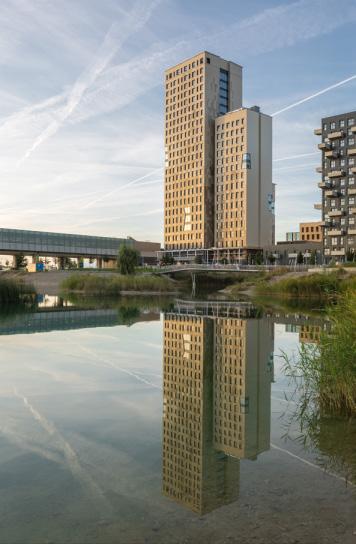
Initially the plan specifi d a height about 15 ft. shorter, but when the client challenged the design team to consider a solu- tion to maximize the height, the designers used curved edges for the glulam pergola topping the structure; this reduced the wind load while allowing for a more robust structure. As a result of the increased height, Mjøstår- net became the country’s third tallest building and its tallest mixed-use structure.
More than 123,600 cu.ft. of timber, equivalent to about 14,000 trees, were used to con- struct Mjøstårnet. The majority of wood components originated from nearby sustainable forests; the glulam structures were produced at Moelven’s factory less than 10 miles from the building site. The CLT used in staircases and balconies was supplied by Stora Enso, while the LVL for wooden floor elements was sup- plied by Mëtsa Wood. Nordic Steel produced the metal timber connections. The Norwegian University of Science and Tech- nology monitored the building during and after construction, and will publish its findings at a later date.
Meanwhile, in Vienna, Aus- tria, another of the world’s tallest wood buildings recently opened to its first commercial tenants, while the hotel plans to open later this year. Designed by RLP Rüdiger Lainer + Partner, the HoHo Wien (left) comprises five structures that contain a hotel, apartments, a restaurant, wellness center and offices, cul- minating in a tower that is 24 storeys and almost 276 ft. tall; this makes it the world’s secondtallest wood structure.
IMAGE: Jean Paul Viguler et Associes
The hybrid structure is built with a concrete foundation and stair/elevator towers, along with glulam beams, CLT walls and prefabricated floor systems made of CLT and concrete. The interiors predominantly feature exposed structural wood; the architect estimates that close to 75 percent of the structure is made from timber. Four prefabricated building components – columns, joists, deck slabs and facade elements – simplifi d assembly, while the connections between ceilings and walls joined together in a modular system. The wood composite floors are secured to the building’s core structures and extend out to the facade. A small concrete ring beam at the exterior wall and floor interface ties all of the elements together.
Roughly 153,620 cu.ft. of wood are used throughout the HoHo Wien project, which has a gross floor area of 269,098 sq.ft. Considerable energy savings (estimated at 300,000 mWh) resulted from the use of mass timber instead of other materials, also saving approximately 2,800 tonnes of CO 2 production, compared to an equal-size concrete structure. Other efficiencies such as photovoltaic systems are helping the building work towards LEED Gold certification.

The developer’s managing director, Caroline Palfy, credits Austria’s forest industry for supporting this sustainable method of construction. “The timber used for the entire project will have grown back in our country’s forests in only one hour and 17 minutes,” she explains. The nation produces more than one billion cu.ft. of timber each year, of which about 85 percent is logged.
Many recent wood projects are competing to claim the “tallest” title, including in Bordeaux, France. Currently under construction, Hyperion (above) by Jean-Paul Viguier will be the country’s tallest residential tower made of wood, with a 16-storey tower. Named after the world’s tallest tree – a California redwood – the project features three buildings with a total of 176 housing units, an underground parking ramp on two levels, an office building and shops. The first three levels are concrete, along with the main tower’s central core, which contains elevators and stairways. Topping this is a wooden structure with CLT floors and partitions, estimated to store approximately 1,000 tonnes of CO 2 . Completion for the wooden tower is planned for spring 2021, while the surrounding buildings and offices are expected to be finished several months earlier.
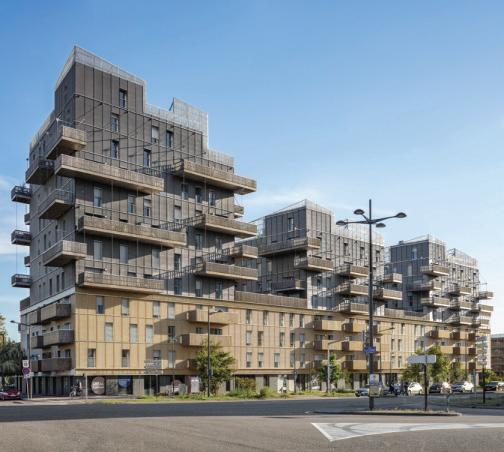
PHOTO: KOZ Architectes
Another project in France which was completed last year – also reported to be the tallest wood building in the country – the Sensations Housing complex (above) by KOZ Architectes is nominated for the 2020 International Award for Wood Architecture. (The same firm is one of several selected to create a mass timber athletes’ village for the 2024 Olympics in Paris.) This is the largest all-timber residential project in the country to date, built on a concrete foundation with three volumes, varying in height from eight to 11 storeys. Situated on what used to be a brownfi ld site in Strasbourg, the 146-apartment structure is built using glulam posts and beams, with structural CLT and shear walls. Steel cladding lends an industrial aesthetic to the exterior facade.
Not much more than a decade ago, in 2008, a worldwide benchmark was set in Sweden by its tallest all-wood building, Lagerhuset by Curt Arnold Salomon-Sörensen – a fourthgeneration architect who is now in his 90s. The 10-storey grain warehouse in Eslöv was saved from demolition and converted into apartments: almost 102 ft. tall, it was unsurpassed in height (with the exception of Australia’s 10-storey Forte Tower) until Treet was completed in 2015, in Bergen, Norway. At 14 storeys and 162 ft. tall, the building designed by ARTEC held the title of world’s tallest wood building until the TallWood House at Brock Commons (in Vancouver, B.C.) was completed in 2017.
Lagerhuset PHOTO: Håkan Dahlström

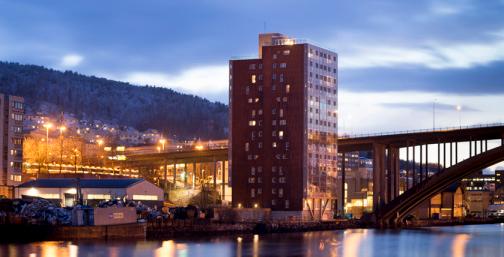

The Cube PHOTOS: Jack Hobhouse

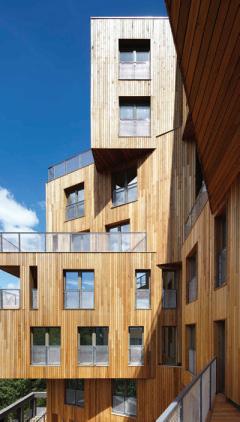
In London, another notable milestone in the race to be tallest is The Cube by Hawkins/Brown. The 10-storey hybrid timber, steel and concrete apartment complex was the tallest European building to use structural CLT when it was completed in 2015 – also surpassing the height of any modern wood/hybrid buildings in North America. A unique, twisted cruciform plan ensures each apartment has three external walls, for optimal daylight and views, while the exterior features Western red cedar cladding.
Tall wood buildings may have a relatively short history, but in that time, each new project illustrates the many ways that we can rethink architecture. With North American building codes now evolving to allow more flexibility in wood construction, it likely won't be long before even more mass timber structures will reach taller heights on this side of the ocean, too. However, Japan plans to surpass even the most ambitious projects announced to date, with a 70-storey, 1,148-ft.-tall hybrid mass timber skyscraper designed by Nikken Sekkei, to be completed for the 350th anniversary of Sumitomo Forestry. With that date being in 2041, it remains to be seen whether this will, indeed, become the world’s tallest timber tower.
The new, patented X-fix connection used in solid wood/CLT structures.
Makes stronger connections, saves time and cost!



80 Atlantic
Jan Schotte, associate at Quadrangle, & Wayne McMillan, intermediate intern architect at Quadrangle
PHOTO: Doublespace Photography
This is the fourth and final installment for our serial profile of 80 Atlantic Avenue in Toronto. With base building construction winding down and the enclosure wrapping up at the end of 2019, the team’s focus shifted to preparing the interior spaces for fit-out by the future tenants. Special consideration was given, in particular, to the treatment of the wood detailing for this highprofile project, which stands as an exemplar for new mass timber construction.
The Victorian architects who designed the neighboring buildings were indiffe ent to their timber skeletons, while this project was oriented to show off its structural elements. There were several site planning reasons to maximize the glazing on the south side of the building: It faces the internal courtyard, offe ing unobstructed views over the neighborhood, and provides the best opportunity for exposing the wood to public view. Along with that visibility, however, came fewer opportunities to hide services.
The wood elements of the building would be a main draw for the tenants, but the details couldn’t hinder the future flexibility of the space. High-tech and creative companies are the main types of tenants seeking the kind of office space that 80 Atlantic provides, so the details needed to accommodate a range of changes that these innovative end users could require throughout the building’s expected lifespan. The future-proofing details had to be clearly communicated through a tenant construction manual that includes graphic illustrations of the building’s features, such as those that integrate and conceal services.
Different approaches were taken for hiding each service. With the ductwork removed from the ceiling and hidden in a raised access floor, the remaining challenges were electrical distribution and fire protection. Accepting that the lights couldn’t be removed from the ceiling, the design team set out to find ways to minimize the visible presence of electrical conduits; thanks to the clear north-south structural bays, the lighting distribution could run along the center of each bay, so that conduits would not have to duck under the beams. For additional electrical distribution, a special recess was created within a number of columns throughout the office plate to allow electrical conduit to run from below the raised access floor to the ceiling. These conduit chases were fitted with removable wood covers to tuck the conduits within the columns, out of sight; that way, tenants can avoid visual clutter on the wood when adding their additional electrical distribution.
Sprinklers also needed to be located overhead, so again the continuous north-south beam orientation was advantageous to organize the sprinkler distribution pipes within each structural bay. The first few floors face 60 Atlantic across the shared courtyard, requiring window sprinklers to maintain complete glazing along this side. These sprinklers are located behind the perimeter beam to ensure they are not visible from the rest of the office. Solar shades were installed afterwards, helping to hide the sprinklers from outside view.
The benefits of mass timber
80 Atlantic is the first of a new generation of mass timber projects in Toronto. In fact, the city now has several other mass timber projects underway at various stages of development. The combination of a booming real estate market, a maturing forestry sector, labour and material supply shortages for other construction methods, and surging professional interest have made the city a focal point for this resurgence of timber construction.
Globally, buildings account for about 40 percent of greenhouse gas emissions; in Toronto, they account for about 52 percent, including both operational and embodied carbon. This, combined with the looming climate crisis, has led sector leaders to seek new ways to build. As the only renewable structural material, and one which stores carbon for the product’s lifetime, timber from sustainably managed forests is key to reducing the embodied carbon of new buildings.
A lifecycle analysis commissioned from RWDI revealed that building 80 Atlantic in wood rather than concrete cut its embodied carbon in half. This single decision saved nearly 2,300 tonnes of emissions – the equivalent of 22 additional years of operational energy. Given the amount of energy expended relative to the operational life of the building, this makes a
compelling case to promote the use of timber for future construction projects. 80 Atlantic is a five-storey office building, and the first to be designed and built under the updated 2015 Ontario Building Code, which permits residential and commercial wood construction up to six storeys. As the first project to seek permitting in the City of Toronto, the goal was to keep within the parameters of the new code to ensure a straightforward approvals process. Since this application, both professionals and the City have grown more comfortable with applying alternative solutions to build outside of these parameters, and as a result, many other mass timber projects are underway that range in both height and use. Demand for taller and taller mass timber buildings continues to grow.
Because timber is much lighter than concrete, when the entire superstructure is designed with wood, this can lead to reductions in foundation design requirements, potentially offering significant savings to the overall construction budget. Timber’s lightness compared to concrete also makes it a viable option for sites shown to have poor soil bearing capacity. Interestingly, one of the issues that can arise with timber construction is the need to actually hold the building down.
Construction schedules can take advantage of the benefits of prefabrication when mass timber elements are manufactured off-site, allowing schedule acceleration and just-in-time delivery when managed eff ctively. Off-site fabrication also typically allows greater precision and higher quality control, resulting in faster and more efficient construction when materials are delivered to site; important to note is that this schedule acceleration is only possible if planned for during the design stage of the project. Because timber is a manufactured product, elements must be designed and coordinated to a higher level of detail with the manufacturers earlier in the process than is the norm in the Toronto development community.
One of the most obvious advantages of building with timber is the potential increase in the speed of construction. Because mass timber products are modular components that are ready for installation the moment they arrive to site, the erection of framing and floor assemblies occurs quite quickly, and with surprisingly few workers required on hand. When compared to concrete again, a wood structure eliminates the time and expenses related to formwork installation and removal, steel reinforcing, reshoring and the time required for concrete to cure before the next floor can be erected. Eliminating these elements also reduces the amount of construction traffic required to and from the site, resulting in a very streamlined construction process with considerable efficiencies available to both the construction budget and schedule. Where a standard construction project may require a crew of 40, a timber building can be erected with six to eight people.
When building in timber, exposing the wood is key to allowing the occupants to enjoy its aesthetic benefits. Wood’s natural warmth and visual appeal allows the option to eliminate the need for interior finish assemblies, which also avoids the need for additional labour and materials costs, eliminates the embodied carbon of these additional materials and limits the length of time that additional trades are required on site.
Perhaps the most convincing argument for building in wood is that people inherently seem to love it. Over the course of construction, it seemed as though every new visitor to 80 Atlantic wanted to have their picture taken hugging a column. Because wood retains its natural character, texture and even smell, people feel attracted to it in a way that they don’t with steel or concrete. An increasing number of studies are finding links between the health and well-being of occupants and the use of wood in the built environment. From an economic perspective, particularly for the commercial program at 80 Atlantic, the attractive environment that wood creates has translated into higher rents and long-term, high-profile tenancies.
As we reach the point where we step back and reflect on the work that we have put in over the past few years, it’s gratifying to know that we have been part of building something new for the city, something that has turned out beautifully, and to contribute to what we see as being an important moment in architecture. We are excited about the number of other mass timber projects that have been announced since the time construction started at 80 Atlantic, and we take that as an indication that our local industry is ready for this new material. As the momentum of mass timber construction grows, we hope that the lessons we have learned, and those of the projects that will follow, will help accelerate the transition to a new method of building that is more environmentally responsible, but also more enjoyable to occupy.
ARCHITECT Quadrangle Architects Ltd.
DEVELOPER Hullmark Developments Ltd.
ENGINEER RJC Engineers
CONSTRUCTION MANAGER Eastern Construction Co. Ltd.
N LT FA B R I C ATO R Timmerman Timberworks Inc.
GLULAM FABRICATOR Nordic Structures
UNITIZED CURTAIN WALL FABRICATOR & INSTALLER Stouffville Glass Inc.
I N C.
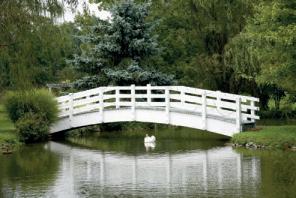




Turn your dreams into reality with the natural beauty of wood! Glue-Laminated Timbers offer performance, stability and charm to your project.




www.rigidply.com










